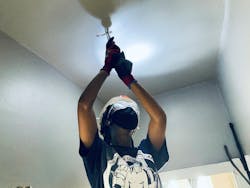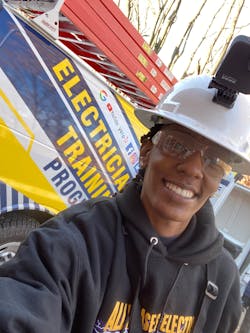Most of the rules that electricians follow in their daily routine can be found in Art. 110 of the National Electrical Code (NEC). Professional electricians know the difference between trade preferences, Code requirements, and wives’ tales. Always remember the Code only sets the minimum requirements you must follow.
Article 110 covers general requirements for access to and spaces about electrical conductors and equipment. It also sets the minimum standard(s) for the use of electrical equipment. The equipment and conductors we use must be:
- Suitable
- Approved by the authority having jurisdiction (AHJ)
- Listed for its intended use
- Labeled for its intended use
Suitability
This is typically accomplished by the product certification of the equipment or materials. Listing or labeling is the most common form of establishing suitability. This is a service that organizations such as Underwriters Laboratories perform for equipment manufacturers. These groups are recognized as qualified testing laboratories. Before the AHJ approves the installation of certain materials or equipment, the inspector or AHJ may require evidence of compliance with Sec. 110.3. So be careful if you buy inexpensive ground-fault circuit interrupter (GFCI) receptacles and electrical boxes on the internet; there may be a good reason those products are so cheap.
Listing and labeling
Here’s a perfect example of this requirement as related to outdoor GFCI receptacle installations. The NEC says the outlet must be identified as a weather-resistant type device, as per Sec. 406.9(A). Identification of suitability is typically listed on the product labeling or the information furnished with the equipment. So don’t be surprised if the inspector or the AHJ examines the products you are installing.
Electricians must pay attention to every little detail of every project they work on. The quality of your work affects the safety of the individuals who work and dwell in the structures you’re working on. We follow these guidelines for “the practical safeguarding of persons and property from hazards arising from the use of electricity.”
Be professional
As professional electricians and progressive apprentices, you need to take pride in your work. Spend the extra time it takes to perform clean, organized installations of your electrical equipment and wiring. Your work is your signature to the world. Make the boss proud. Make an impression on the inspector and the customer(s).
Use your torpedo level to set your raceways, boxes, and panels. Terminate your conductors neatly in your device boxes. Don’t leave knockouts unsealed [Sec. 110.12(A)]; plug them up! When you’re finished installing a panel, gear, or a piece of electrical equipment, it “shall not be damaged or contaminated by foreign materials, such as paint, plaster, cleaners, abrasives, or corrosive residues” [Sec. 110.12(B)]. There should also be “no damaged parts that may adversely affect safe operation or mechanical strength of the equipment.”
A quality installation has no “parts that are broken, bent, cut, or deteriorated by corrosion, chemical action, or overheating.” This is not hard to accomplish if you take your time, be patient, and remain focused.
In addition, your panels, boxes, or equipment shouldn’t be loosely mounted or wiggly on walls, structures, or inside cabinets. “Electrical equipment shall be firmly secured to the surface on which it is mounted” [Sec. 110.13(A)].
Follow my column for more practical how-to articles and tips on electric basics and applying those concepts in the field, especially how to put NEC requirements into practice in real-world settings. For more information on why a structured approach is so important to navigating the NEC, read “The NEC for Newbies.”
Harold De Loach, a master electrician and electrical trainer/instructor, is the founder of The Academy of Industrial Arts (www.taia-school.com) in Philadelphia. With more than 30 years of experience in the field, he writes regular exclusive content for the E-Train and can be reached at [email protected].
About the Author
Harold De Loach
De Loach is the Director of Education and Training for the Leaders of Electrical License Preparation courses for Philadelphia and The Lehigh Valley (www.necprepclass.com). He is the founder and Director of The Academy of Industrial Arts L.L.C. (www.taia-school.com), a customized electrician training program that provides entry-level electrician training courses, electrical safety classes and customized electrical construction courses. He is trained by the National Center for Construction Education and Research (NCCER). He is a member of The National Society of Collegiate Scholars, the Independent Association of Electrical Inspectors, the Electrical Association of Philadelphia, and the Better Business Bureau.
His level of knowledge affords him to teach entry, intermediate, and master level electricians. Armed with more than 20 years of experience in the electrical, general construction, and real estate development industry, he offers his students and clients several unique skill sets. He has worked as the Head Craft Instructor and Assistant Director of Education at the Apprenticeship Training Center (affectionately known as The ABC School) in Harleysville Pennsylvania for Associated Builders and Contractors (The South-Eastern Pa. Chapter). Prior to Joining ABC, he directed a work-readiness (Re-Entry) Construction Technology program within The Philadelphia Prison System and as an Electrical Technician Program instructor at Kaplan Career Institute (Formerly Thompson institute) in Center City Philadelphia and Franklin Mills. He is available for consultation, private tutoring, speaking engagements, or strategic partnerships that can bolster the number of new electricians entering the industry.


